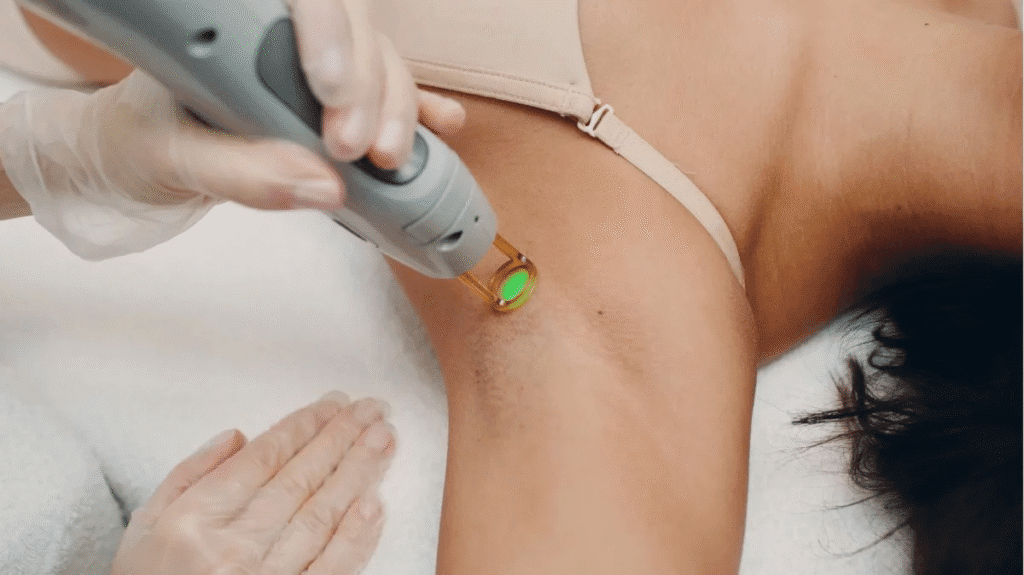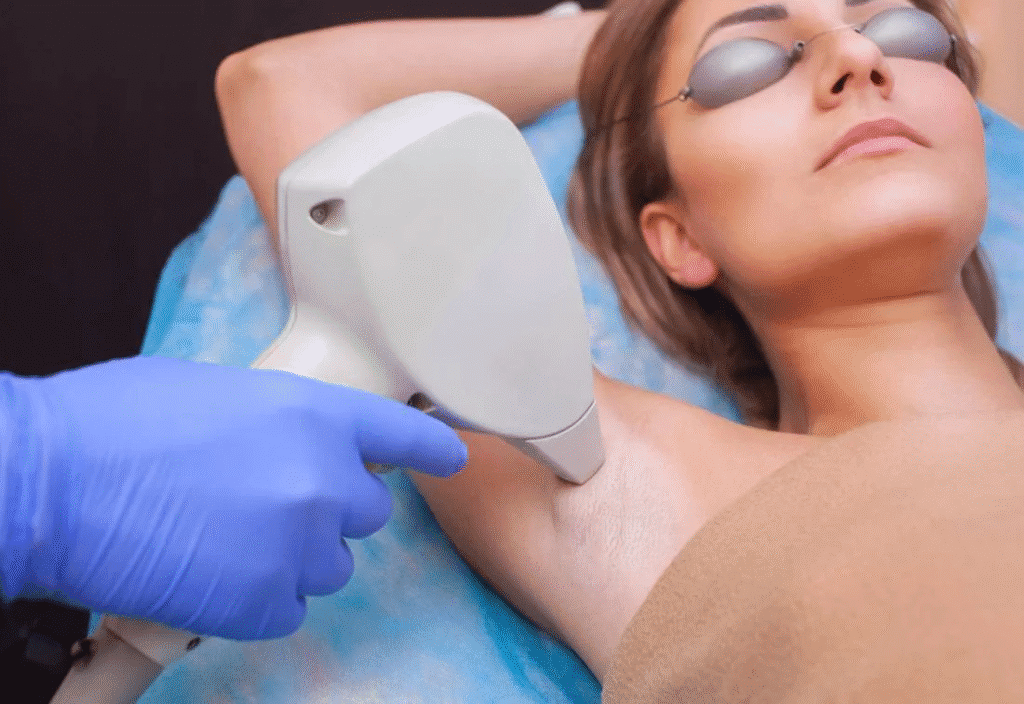Dark underarms can be a frustrating experience, especially when they do not blend with the rest of your complexion. While it may be tempting to write off the change as harmless, underarm pigmentation tends to be an indicator of something going on beneath the surface—anything from skin irritation and shaving habits to hormonal shifts or medical conditions.
To assist you in getting the why and what to do, we spoke to Dr. Niketa Sonavane, a renowned dermatologist with specialization in pigmentation and aesthetic skincare.
Common Causes of Underarm Darkness

“Underarm darkness is more common among people with darker skin tones,” says Dr. Sonavane. This is primarily because of greater melanin activity, which makes the skin respond more to inflammation or friction. Here’s what may be causing the change:
1. Deodorants and Antiperspirants
Most commercial deodorants include alcohol, parabens, aluminum, and synthetic fragrances, which can irritate delicate underarm skin. Dr. Sonavane says, “Chronic irritation from these ingredients can lead to inflammation, which over time causes skin thickening and hyperpigmentation.”
Improved version: Opt for products that are marked as “alcohol-free,” “fragrance-free,” or with glycerin and aloe vera, which are kinder to the skin.
2. Shaving Habits
Incorrect shaving leads to micro-injuries and inflammation, producing post-inflammatory hyperpigmentation. All of this can be contributed by a dull razor, omitting shaving cream, or over-shaving.
“If your underarm skin is darkening and you shave regularly, the irritation or hair shadow effect could be to blame,” says Dr. Sonavane. Hair removal creams may also cause similar pigmentation if they have harsh chemicals.
Pro tip: Shave with a mild, clean razor, use a moisturizing shave gel, and don’t shave every day. Soothing after-care with a lotion minimizes trauma.
3. Inadequate Exfoliation
Dead skin cells accumulating can make the skin area appear dull and irregular. Mild exfoliation with a gentle scrub once or twice a week ensures brighter skin.
4. Wearing Tight Clothing
Friction caused by tight or synthetic clothing can irritate the underarm region, causing gradual darkening. Wearing loose, airy cotton clothes can avoid this.
5. Medications
Some medications, such as insulin, birth control pills, corticosteroids, and high-dose niacin, can cause pigmentation as a side effect. While usually innocuous, discuss with your doctor if you suspect a link.
6. Underlying Medical Conditions
Pigmentation can be an indicator of conditions such as:
- Acanthosis Nigricans (associated with insulin resistance or diabetes)
- Eczema
- Hormonal imbalance
- Obesity
- Addison’s disease
- Erythrasma (bacterial infection of folds of the skin)
If sudden or increasing underarm darkness occurs, it’s essential to have medical assessment.
How to Remove Hair Without Causing Pigmentation

Shaving at home is easy, but gentle skill is essential. Dr. Sonavane advises:
- Softening skin in lukewarm water beforehand
- Gently exfoliating prior to shaving
- Using a sharp razor and moisturizing shaving cream
- Moisturizing after shaving with fragrance-free lotion
“If the reason is post-inflammatory pigmentation, topical treatments containing kojic acid, licorice extract, or low-dose glycolic acid can lighten the spot over time,” she continues.
Safe Home Remedies (Supported by Traditional Use)
Home remedies can assist with brighter skin, but caution and consistency are key. These aren’t magic overnight remedies—and they’re not a replacement for medical attention in extreme situations.
Baking Soda + Lemon
Gently peels and lightens. Blend into a paste, use for a couple of minutes, and then rinse. Use 2–3 times a week and follow up with moisturizer. (Do not use if you have sensitive skin.)
Coconut Oil
High in vitamin E, coconut oil is also said to calm skin and improve tone over time. Massage in and then wash off after 15 minutes.
Apple Cider Vinegar
ACV contains natural AHAs that are exfoliating. Mix with baking soda, apply for a short time, then rinse. Use sparingly to avoid irritation.
Cucumber or Potato Juice
Both have gentle skin-lightening qualities. Apply directly or as juice for 10–15 minutes, then rinse.
Aloe Vera Gel
With its soothing and anti-inflammatory effects, aloe can soothe the skin and even out tone. Use daily if well tolerated.
Medical Treatments That Work

If natural treatments are not effective, professional skin care measures can provide specialized treatment:
1. Topical Creams
Prescription creams that include:
- Niacinamide
- Arbutin
- Kojic acid
- Hydroquinone (for brief duration)
- Retinoids
- Vitamin C
can depigment. These should be applied under the guidance of a dermatologist.
2. Chemical Peels
Light peels with lactic acid, glycolic acid, or TCA remove dead cells and stimulate the skin. “They help bring out newer, brighter skin and better texture,” says Dr. Sonavane.
3. Microneedling
This in-clinic treatment employs micro-needles to stimulate collagen and minimize pigmentation. It’s perfect for those who want a non-invasive but serious solution.
4. Laser Treatments
Lasers like the Q-switched Nd:YAG or Triple-wavelength diode laser can be used for both:
- Permanent reduction of hair
- Removal of pigmentation
“These treatments can also limit the action of sweat glands and reduce pore size, enabling you to use lighter deodorants in the future,” says Dr. Sonavane.
Final Thoughts
Dark underarms are not just a cosmetic problem—often, they are a sign that your skin requires an extra degree of care and attention. Whatever the cause, whether by friction, shaving, irritation, or medical factors, there is relief to be found—from home remedies to hi-tech dermatologic treatments.
Also Read : Skincare in 2015 vs 2025: What’s Out and What’s In — A Skin Doctor’s Honest Take



